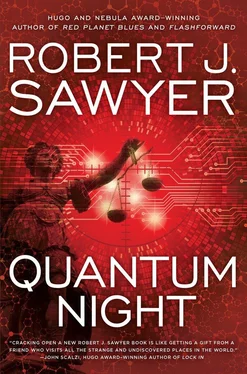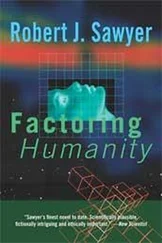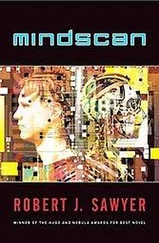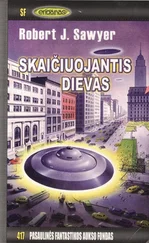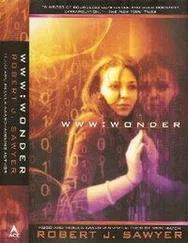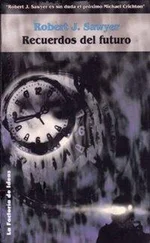“What about the shock-machine guy?” asked Victoria.
“Stanley Milgram,” I said, nodding. “He went the other way after that experiment. He hated that it had become this giant thing, with everyone questioning his ethics, so he retreated into studies that no one could consider controversial. He pioneered the ‘lost-letter’ technique, which tests if people will take the trouble to put stamped envelopes they find on the ground into a mailbox. Turns out most people will, if the letter has a neutral or positive addressee, such as a respected charity, but won’t if it’s addressed to ‘Friends of the Nazi Party,’ or something like that.”
“Still exploring good and evil,” Kayla noted.
“True,” I said, “but in a way that couldn’t hurt anybody. And he spent even more time on something completely benign. Milgram called it the small-world problem, and he was one of the first people to really study it—but it’s better known now as Six Degrees of Separation, or Six Degrees of Kevin Bacon. Milgram showed that any two people are connected by a very small chain, and—”
Victoria sat up straight. “Like Travis and Ross!”
“Pardon?” said Jim.
“Travis—Kayla’s brother—he’s connected to my ex-boyfriend Ross, right, in that very way. Travis to Kayla to me to Ross; hell, that’s only three degrees of separation!”
Suddenly Kayla seemed excited, too. “My God, that could be it!”
“Do you have a computer here with Maple on it?” asked Vic.
Kayla nodded. “Yes, yes! In my study.”
“What’s up?” I asked.
Kayla replied hurriedly: “There seems to be entanglement between Travis, Ross, and Vic, and we’ve been trying to puzzle that out.” I knew that entanglement was a quantum connection—entities intertwined so that no matter how far apart they were physically, what happened to one instantly affected the other.
Kayla’s excitement was palpable. “At the moment Travis gained consciousness, the background entanglement reading ratcheted up a notch for Ross, and we think for Vic, too. And it can’t be that Vic’s reading went up just because a random new person gained consciousness, right? I mean, people are born and die all the time, yet we’ve never seen that sort of boost.”
Vic was already on her feet, and Kayla rose while continuing to speak: “But if the spike is proportional to the degree of separation, then someone as close on the small-world network as Travis is to Ross—even though they’ve never actually met—would register, at least a little, while the constant distant background churn of total strangers coming in and out of existence would be too insignificant to be seen.”
The two women hustled off to Kayla’s study, talking animatedly. I turned to Ryan. “Let’s load the dishwasher, then watch some TV.”
“Netflix has Inspector Gadget!”
“You got it, Ginger Ale.”
* * *
I ended up putting Ryan to bed on my own; Victoria and Kayla were still working away furiously in the study. When I came back downstairs, I used the living-room TV to look at more news: six dead migrant workers in Texas, a dead eleven-year-old Cree girl in Manitoba, a synagogue bombed in Paris, a mosque bombed near London, another Boko Haram raid. Worse and worse.
About an hour later, the two women emerged—I’d have been delighted to see them under any circumstances, but the pair of ecstatic faces were particularly welcome just then.
“Well?” I said, turning off the TV.
“It all fits,” said Victoria, triumphantly. “We’ll run more tests tomorrow, but it looks like a solid model.”
“I’m all ears.”
“Okay,” said Kayla, coming to sit next to me on the couch. “We already knew that all the microtubules in individual brains are quantally entangled. That’s why they’re all in the same superposition state for any given person, right? Either all of their tubulin dimers have one electron in superposition, or they all have two, or they have all three.”
“Or none,” I offered.
“Yes, yes, if they’re out cold, they have none. Right. Now, we don’t know what consciousness is exactly, but that’s its physical correlate: the collectively entangled all-in-the-same-state quantum field within a given person’s brain. That’s the physical thing that gives rise to whatever level of consciousness a person might be experiencing: the emptiness of a p-zed, the cunning of a psychopath, or the conscience of a quick.”
“Okay,” I said.
“But not only is each human brain an entangled system, every human brain is an entangled system.”
I frowned. “I don’t see the distinction.”
Vic took it up: “The sum total of human consciousness—all 7.7 billion people, regardless of what quantum state they individually might be in—forms one single entangled system, connected by small-world networking. It’s the collective quantum inertia of that system that keeps people from changing states. That’s the reason we can’t take a p-zed, say, and boost him up to being at a higher state: you can’t change the quantum state of one individual without affecting all the others, which is why the quantum tuning fork doesn’t have an effect on an already awake individual. The inertia of the totality of humanity prevents any shift.”
“But that can’t be right,” I said. “People get put out for surgery all the time. But only the patient is affected.”
“Yes,” said Vic. “That’s a special case, because it involves decoherence. When you are put totally under by anesthesia, you cease to be in quantum superposition and drop back to the classical-physics state—Penrose and Hameroff proved that—and so, by definition, if only classical physics pertains, you cease to be subject to entanglement.”
“And,” I said, “that means…?”
“It means,” said Kayla, “that you exit the collective if you truly lose all consciousness.”
“Okay,” I said.
“But,” continued Kayla, “everybody within the collective—all seven billion Q1s, Q2s, and Q3s; everyone who is not in the classical-physics state—could only conceivably change quantum state in lockstep, shifting en masse.”
“Really?”
“Yes,” Kayla said. “It’s one for all, and all for one.”
“Homo sapiens —one big happy family,” Vic added.
Not so happy of late, of course, but I wasn’t going to ruin their moment of triumph. Still, I looked back at the TV screen. Funny: no monitor made since I was a kid had any sort of burn-in problem, and yet, as I gazed at the black rectangle, I could see the ghostly afterimage of the atrocities it had just shown me.
“Professor Marchuk?”
It was Veronica, in the third row, her hair in long cornrows. “Yes?”
“I get it. I mean, I really do. I get how all this utilitarian thinking can be a good thing. But, well…”
“Yes?”
“Well, it just seems so cold, is all. So calculating.”
I looked out at the students. Veronica appeared genuinely conflicted, but Boris had a smug expression, and his arms were crossed in front of his chest, as if his classmate had just detonated a nuke on my pet philosophy. He looked positively disappointed when I said, “You’re right, Veronica.”
And, for her part, Veronica looked surprised. “I am?”
“Yes, certainly. On the surface, being a utilitarian appears to mean embracing your inner psychopath.” I paused. “Do you guys know the Trolley Problem?”
A few nods, including Boris, but mostly blank faces.
“Well,” I said, “imagine a streetcar is barreling along the tracks, out of control. There’s a split in the tracks: one fork leads to where five people are standing and the other leads to where one person is standing. The trolley will hit and kill the five unless you throw a switch and divert it onto the other track, in which case it’ll only hit and kill one person. Do you throw the switch? Boris?”
Читать дальше
